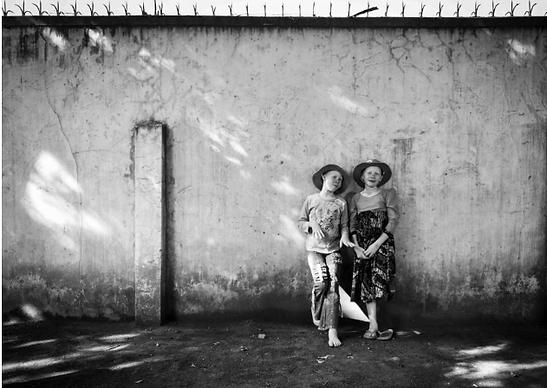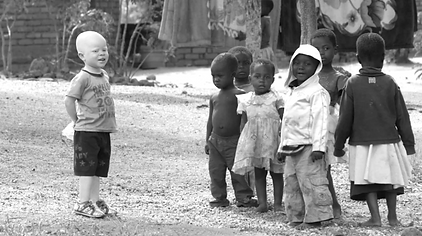
Needs Assessment

Sacha de Boer (2016)
Assets
The people with albinism in Sub-Saharan Africa have several assets to help them.
-
Organizations
-
Several organizations have formed with a mission to help people and children with albinism. These organizations strive to address the injustices and to improve the rights of these people. The organizations strive to advocate for the needs of these individuals, provide education about their condition, and protect them from further harm.
-
-
Others with Albinism
-
The people with albinism have each other for support, especially those living together in orphanages (pictured above). By living with others with albinism, they have social and emotional support from people with shared lived experiences who have endured similar challenges.
-

Limitations
This population faces many challenges that affect numerous aspects of their daily lives. They are often disabled because of the structure and people in society who underestimate their abilities.
-
Physical limitations
-
Visual:
-
Albinism affects the structure and pigmentation of their eyes, therefore causing visual impairments. Many people with albinism are considered legally blind. Approximately 85% of children with albinism in South Africa have less than 30% vision without the use of corrective lenses (Franklin, Lund, Bradbury-Jones, & Taylor, 2018). These limitations can affect their participation and success in school, work, and other areas of their life. People who believe in the myths about their limbs and body parts being lucky charms often inflict violence on this population by amputating their limbs. Without both hands or arms or adaptive equipment for assistance, these individuals are limited in the activities they can engage in independently.
-
-
Cancer:
-
The lack of pigmentation in the skin of people with albinism increases their risk of cancer because of the decreased protection in their skin. Exposure to the sun in large quantities can put them at risk of developing sores on their skin due to inadequate protection.
-
-
-
Occupational Performance Issues
-
Social participation is also affected by the stigma and stereotypes held towards this population. For example, children lack socialization by not being able to meet people at school if they cannot attend, peers often exclude or ignore children with albinism at school or social settings, and insecurity in their neighborhoods and community also affects socialization.
-
Relationships with family and friends are typically affected because children are sent away to shelters. The purpose of the shelters is to protect the children, but then they are isolated from their families and friends outside of the shelter. However, some families abandon their children with albinism because they believe they're a curse and don't want to claim them. In these cases, children don't have an immediate familial support system to cope with the stressors and challenges they face.
-
Formal education participation is limited for many children with albinism. Many teachers are not trained to teach these individuals with special needs, therefore, if they are given the opportunity to attend school, they often struggle without the adequate accommodations. Also, educators don't always respect their limitations and precautions, such as planning activities in the sun even though people with albinism are at risk in the sun.
-
People with albinism live in constant fear due to the violence and attacks against them. Their psychosocial health is often affected due to the constant stress, fear, and isolation living in shelters. The trauma from their lived experiences also can affect their mental health and well-being. Facing their challenges without a strong support system, this population is at risk of depression and mental illness, which also affects their engagement in meaningful activities and quality of life.
-
-
Sociopolitical considerations:
-
Stigmas
-
People with albinism are stigmatized by society because of the myths and false stereotypes. The belief that their body parts are 'lucky' and can bring wealth to others increases the amount of attacks on them. The negative stigmas about this population affect their social participation with others because of the negative beliefs.
-
- Events / Politics
- Prior to elections, some candidates seek out advice from witchdoctors for potions and 'good luck'. During the time preceding elections, children with albinism are in danger because their body parts are highly valued to be sold as lucky charms and to increase wealth. People involved in this inhumane trade are rarely prosecuted.
- Policies
- Children with albinism are often restricted from attending schools to gain an education. People are restricted from jobs due to stereotypes of being a curse, 'disabled', or underestimated due to who they are. These children are seen by some people as not worth being educated because they don't have a voice in society. Such stereotypes disable people with albinism and limit their potential. The inability to earn and education limits their opportunities for employment, therefore increasing their likelihood of living in poverty.
- Regulations
- Shelters were created to protect children and people with albinism. Children were taken from their families without explanations until they were placed in shelters for several years. This separation and isolation from family affects the mental health and well being of many children. After the traumatic events being taken from one's family, children entered shelters and many of them lost contact with their family and don't know their whereabouts to ever find them again.
-
